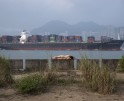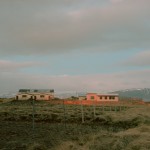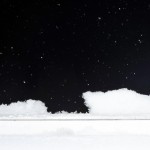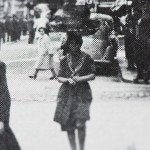The 2024 Lenscratch 1st Place Student Prize Winner: Mosfiqur Rahman Johan

©Mosfiqur Rahman Johan, A significant portion of the country’s GDP is spent on mega projects by the government. Behind the rise of each mega project lies the tale of homes lost, agricultural land forfeited, and people’s profound grief. Thousands of acres of land have been acquired for the construction of coal power stations. Approximately 20 thousand people will be displaced in the long run. September 9,2022
It is with pleasure that the jurors announce the 2024 Lenscratch Student Prize 1st Place Winner, Mosfiqur Rahman Johan. Johan was selected for his project, Memories of Underdevelopment, and is currently attending the Counter Foto Center of Visual Arts in Dhaka, Bangladesh, working towards a two year degree and then an MFA in Photography. The 1st Place Winner receives a $1500 cash prize, a $250 cash prize and a seat at the New England Portfolio Reviews from The Griffin Museum of Photography, a $750 Gift Certificate toward portfolio printing at The Image Flow, a $500 Gift Certificate from Freestyle Photo Supplies, a seat at the Exposure Reviews from the Los Angeles Center of Photography Workshop, a collection of books from St.Lucy Books, a collection of books from Yoffy Press, a collection of books from Kris Graves Projects, a collection of books from Zatara Press, a one year subscription to Aperture Magazine, a review session with Hamidah Glasgow, Executive Director of the Center for Fine Art Photography, a review session with Samantha Johnston, Executive Director of the Colorado Photographic Center, a year long mentorship with Aline Smithson, a Lenscratch T-Shirt and totea feature on Lenscratch , a mini exhibition on the Curated Fridge, and a Lenscratch T-shirt and Tote. Needkess to say, we are so grateful to our amazing sponsors.
Mosfiqur Rahman Johan is a documentary photographer who used the camera to understand and call attention to the crisis of “progress”, where development and change profoundly impacts communities and culture. His background as an anthropologist allows him to not only find the humanity in his narratives, but the deeper and more critical effects of development, pollution, and loss. This work is also personal, featuring lands and people familiar to him. He comes to it with a knowledge of what has come before and has created “a visual journal that delves into the profound psychological impact of losing one’s space and belongings.” We are honored to shine a light on his efforts and select him for the 1st Place 2024 Lenscratch Student Prize winner.
An enormous thank you to our jurors: Aline Smithson, Founder and Editor-in-Chief of Lenscratch, Educator and Artist, Daniel George, Submissions Editor of Lenscratch, Educator and Artist, Linda Alterwitz, Art + Science Editor of Lenscratch and Artist, Kellye Eisworth, Managing Editor of Lenscratch, Educator and Artist, Alexa Dilworth, Independent Writer, Editor, Curator, Former Publishing and Awards Director; Senior Editor, CDS Books Center for Documentary Studies at Duke University, Kris Graves, Director of Kris Graves Projects, photographer and publisher based in New York and London, Elizabeth Cheng Krist, Former Senior Photo Editor with National Geographic magazine and founding member of the Visual Thinking Collective, Hamidah Glasgow, Director of the Center for Fine Art Photography, Fort Collins, CO, Yorgos Efthymiadis, Artist and Founder of the Curated Fridge, Samantha Johnston, Executive Director of the Colorado Photographic Arts Center, Drew Leventhal, Artist and Publisher, winner of the 2022 Lenscratch Student Prize, Allie Tsubota, Artist and Educator, winner of the 2021 Lenscratch Student Prize, Raymond Thompson, Jr., Artist and Educator, winner of the 2020 Lenscratch Student Prize, Guanyu Xu, Artist and Educator, winner of the 2019 Lenscratch Student Prize, Shawn Bush, Artist, Educator, and Publisher, winner of the 2017 Lenscratch Student Prize.

©Mosfiqur Rahman Johan, Childrens are playing in the vicinity where the coal power plant has been erected,december 9, 2023.
Mosfiqur Rahman Johan is an anthropologist and documentary photographer, born in Bangladesh in 1997. He has a passion for documenting humanitarian issues, environmental concerns, and socio-political events. Over the years, Johan has traveled extensively throughout Bangladesh to capture compelling visual narratives that raise awareness about social issues and shed light on lesser-known stories that deserve attention. Johan studied anthropology to deepen his understanding of the complex issues he documents. There, he honed his skills in ethnography and research-based documentary techniques, which have helped him to better capture the nuances and complexities of the cultures and societies he photographs.
Johan’s artistic approach merges with long-term immersion, where he actively engages as a participant observer, close contact with the subjects and systematic repetition eschews non facile interpretations to convey layered, sensitive and sometimes contradictory observations on complex issues such as enforced disappearance, the death penalty, police brutality, forceful displacement and environmental issues. By exploring the memories of interlocutors, he explores the themes of resistance and resilience–overlooked, yet so important shaping the narrative of the larger sociopolitical context. Through narrative-driven documentation, he aims to portray the complexities of social dynamics and cultural identities, challenging perceptions and old discourse of state violence, securitization, gender subjectivity and policing also on forceful displacement, development discourse and environmental issues .
Johan also explores a visual journal that delves into the profound psychological impact of losing one’s space and belongings. Through his work, he strives to connect the fragmented memories and fading realities with the broader world, seeking solace and understanding in the shared human experience. His visual narrative is an exploration of loss, memory, and the unyielding passage of Ame, as he navigate the delicate balance between life and nothing more.
Johan’s works have been awarded, exhibited, and featured in different international media and platforms around the world.
Follow on Instagram: @mosfiqur

©Mosfiqur Rahman Johan, The Payra 1320 MW Thermal Power Plant is a 1,320 megawatt coal-fired power station built in Kalapara Upazila of Patuakhali District in southern Bangladesh. It is a joint venture between the North-West Power Generation Company Bangladesh Limited and China National Machinery Import and Export Corporation,January 26, 2019.
I want to thank a one of my Mentor, Ahmed Rasel, from whom I have learned how to be good visual storyteller in this giant art world and mature not only as a photographer, but also as a human being. I feel proud to have him as my photography mentor. I also want to thank all the faculty members of Counter Foto – A Center for Visual Arts, for allowing me to grow as a photographer and providing all the support anytime, anywhere. I may still have some lackings, but I have always been open-minded and tried to learn as much as I could from them. I am currently pursuing two years professional photography program in counter foto – a centre for visual arts. – Mosfiqur Rahman Johan

©Mosfiqur Rahman Johan, A coal-laden ship has docked, and the process of transferring the coal from the ship to the coal plant is currently underway,September 12, 2023.
Memories of Underdevelopment
Spending childhood and adolescence in my grandparent’s house, I only got warmth from that place. Not just from one house or a yard, but from a whole village. Now, when I go back to that Morichbunia village, I only get the heat of development which ruined the land, the economy, the people’s last asset, and everything possible. Payra Power Plant Project started in 2014, and since then the Dhaankhali Union of Bangladesh has been facing ruins every day. Visibly, the loss was only of lands. But losing lands also changes shelter, culture, agriculture, memories, kinship system, and even identity.
Where home is by default connected to identity, this process of changing the ownership of lands can’t be separated from the local politics of cultural inclusion and exclusion. Apart from human life; the ecosystem, local plants, rivers, and other animals are also the victims of this destruction. The community ultimately didn’t even get the promised jobs, homes, land, or proper compensation.
A large number of people shifted, leaving their ancestral houses behind. The houses and lands are there, but those who were supposed to bring the life there don’t exist there anymore. This mega project left the land with the elegy of memories. While looking at the traces of development with migrational trauma in their head, people in my hometown now see only the dust and dense air of coal-based power plants.
Memories of underdevelopment delve into the complexities of identity, belonging, and loss experienced by individuals whose homes have been transformed by large-scale development projects, highlighting the profound social, cultural, and environmental consequences of such endeavors.

©Mosfiqur Rahman Johan, The thermal power plant authorities haven’t fulfilled their promises, as seen in discussions with affected locals. Over 1,000 families have lost land and homes for the project, but only three hundred new homes have been built. The fate of the remaining seven hundred families is uncertain. Most haven’t received compensation yet, but eviction notices are out. Sandpipes surround homes, and many have already collapsed. the photos has been taken on april 27,2019.
Can you tell us about your growing up and What brought about your interest in the medium?
Growing up in Kalapara, a small rural area in Bangladesh, I had an idyllic childhood. The town was untouched by the wave of technology that swept through other parts of the country, so I spent my days playing with friends, cycling, and exploring the natural beauty that surrounded us. I have a twin brother and an older sister who is two years my senior, and together, we created countless adventurous and beautiful memories.
However, everything changed when my family moved to Dhaka, the bustling capital of Bangladesh. The transition was jarring. In Dhaka, the connection to nature that I cherished was absent, and I felt lost and trapped in the concrete jungle. This sense of dislocation and the overwhelming change in environment left me feeling hopeless and unable to process what was happening around me.
During this challenging period, I discovered photography. My interest in the medium sparked from my love for films, particularly after watching “Boyhood.” The film made me realize that photography could be a powerful way to express my feelings. In 2016, I began taking photos, aiming to capture the essence of my surroundings and the simple stories unfolding in the streets. Through my lens, I tried to rediscover my childhood days and document the shifts in my life. Photography became a medium that resonated with my feelings, allowing me to express emotions that words couldn’t cap
Please share more about your educational experience. How did your creative practice evolve while you were in school?
My educational journey has profoundly shaped my creative practice, particularly as I navigated the transformation of my village, Morichbunia, due to the establishment of a coal power plant in 2014. Witnessing the drastic changes firsthand, I saw the local ecosystem, including plants, rivers, and animals, suffer alongside the displaced human population. The disruption was overwhelming, and I struggled to process what was happening.
In 2016, I began using photography as a means to capture my feelings and the essence of my surroundings. By 2017, I realized the urgent need to document my village, as the changes were both unbearable and unbelievable. Over 20,000 people were displaced, and while the state promoted the project as beneficial, the reality was starkly different. This contrast spurred my interest in the politics behind development projects and the broader discourse on development around the world.
To gain a deeper understanding, I decided to study anthropology in 2019. My goal was to learn about the theoretical and historical aspects of development, enabling me to work on my project with a more informed perspective. During this time, I continued documenting my village, enriching my work with insights from my anthropological studies.
In 2022, I joined a photography program to receive feedback and engage in critical discussions about photography. This environment was incredibly beneficial, exposing me to the work of other photographers and fostering critical analysis and critique. Combining my background in anthropology with my photography, I was able to merge these disciplines and evolve my creative practice significantly. This interdisciplinary approach has been instrumental in developing my work, allowing me to capture the complexities of identity, belonging, and loss in a rapidly changing environment.

©Mosfiqur Rahman Johan, Once, a child grazed her cows here, but now, the place is gone because of the coal power plant. This photo was taken september 22,2022
It’s been 10 years since the start of the Payra Power Plant Project. Has your village disappeared? Do you still have family there?
It’s been 10 years since the start of the Payra Power Plant Project, and in many ways, my village, Morichbunia, has disappeared. The destruction extends beyond the visible loss of land to encompass the ecosystem, local plants, rivers, and animals. This loss has transformed our shelter, culture, agriculture, memories, kinship systems, and even our identities.
Before the power plant, our village thrived on fishing and agriculture, with cultural practices deeply rooted in these occupations. However, the environmental devastation caused by the coal power plant has made these traditional ways of living impossible. Many people, including most of my relatives, have been forced to leave in search of better lives.
Our old house and land were occupied, compelling us to build a new home on the border of the plant. While some physical remnants of the village remain, the cultural and social fabric that once defined Morichbunia has been irrevocably altered. The environmental and social conditions make it untenable to live there, and the displacement has fragmented our community, scattering us far from our roots.

©Mosfiqur Rahman Johan, As a result of climate change-induced rising water levels, a serene fishing spot, previously untouched by encroaching waters, now finds itself submerged, impacting the local community directly. This photo was taken on September 9,2023
What kind of research did you do for this project?
For my photography project, thorough research was essential to accurately portray the profound changes in my village, Morichbunia, due to the Payra Power Plant Project. I began by interviewing numerous residents, including my own family, to understand their experiences and struggles. Capturing the human side of the story was crucial, particularly the challenges they face in obtaining compensation due to corruption and bureaucratic hurdles. Many people have spent countless hours trying to get compensated without success.
To address this, I obtained century-old documents to prove land ownership, highlighting the longstanding connection people had to their land. This historical evidence underscored the injustice faced by the villagers, who had lived on and cultivated the land for generations.
Another significant aspect of my research involved investigating the environmental impact of the power plant. I documented the severe damage to local water sources and the ecology. For instance, I traced the path of a canal that will soon be buried under sand due to the plant’s expansion. The sand and smoke from the plant have also taken a toll on the local community, causing various health issues and significantly affecting their quality of life.
The cultural and spiritual connections to the land further deepened my understanding of the village’s transformation. In many agricultural societies, the river holds special significance for farmers. It is not just a source of water for irrigation but also a symbol of purity and abundance. The river provides solace and a connection to the divine, intertwining spirituality with agricultural practices. This connection between nature, religion, and land is a fundamental aspect of the farmer’s worldview.
One poignant account from a village elder encapsulates the deep loss experienced by the community: “I have spent 67 precious years of my life in this village, just like my father and grandfather who have called this place home for at least 300 years. However, now we are being unjustly forced to leave our ancestral land. We have not willingly abandoned our land, but we are being pushed out. We have protested tirelessly against the government to uphold our rights to our land. We even filed a case in the High Court in the hope of being able to stay here, but unfortunately, we have failed. Our livelihoods have been stripped away from us, and we have lost everything we had.”
This research helped me create a more comprehensive and authentic portrayal of the village’s transformation, blending personal stories with historical and environmental context. By capturing the human, environmental, and cultural dimensions of this change, my project aims to shed light on the profound impacts of large-scale development projects on local communities.

©Mosfiqur Rahman Johan, A lone cow grazes in the fields of the projected area, surrounded by a veil of smoke emanating from the nearby coal power plant,September 22,2022.
Is there a mentor that you’d like to acknowledge?
I would like to express my heartfelt gratitude to Ahmed Rasel, a dedicated faculty member at Counter Foto. His guidance has been instrumental in my growth as a photographer. Ahmed helped me identify the areas of study I should focus on and taught me about the representation of images, encouraging in-depth discussions about image politics. He provided invaluable insights into how development and environmental issues can be effectively portrayed in my photographs.
Ahmed also recommended various works for me to explore, broadening my scope and perspective. His thorough review of my entire body of work, something I had never done before, provided me with constructive feedback that has significantly improved my practice. By integrating his feedback, I have been able to create more powerful and impactful stories through my photography. His mentorship has truly been a cornerstone of my development as an artist.

©Mosfiqur Rahman Johan, A once-thriving canal, now filled with sand as a result of land acquisition and water pollution from chemicals. Local villagers, who once depended on the canal for fish, now bid farewell to their beloved fishing spot by fishing for the last time as the fish population dwindles. January 26,2019.
Was there any advice that you received (in the form of a critique, or something else) that you feel had a significant impact on the trajectory of your work? Would you mind sharing?
In a review session, Saiful Huq Omi, a photographer I deeply respect, once mentioned that by the age of 32, I could become a Magnum photographer if I can manage my stability and continue learning about photography. This advice had a significant impact on the trajectory of my work, motivating me to stay focused and dedicated to my craft.

©Mosfiqur Rahman Johan, Monowar Mridha, aged 57, stands upon the ground where his house and land once resided,March 6,2024.

©Mosfiqur Rahman Johan, After the operation of a coal-fired power plant, the spread of carbon-emitting ash has led to a decrease in coconut production within a radius of 25-30 kilometers. No matter how much yield is obtained, it may not be nutritious. 50-60% of the yield dries up prematurely, falls off with the stem, and rots. Many plants have started to die off. Black patches of carbon-emitting ash are seen on the leaves, which are becoming thicker or heavier than usual due to carbon-emitting ash! It’s as if the plants are suffocating,march 9.2024.

©Mosfiqur Rahman Johan, A displaced woman rokeya begum (60) visits the site of her former home and land. May 24,2018.

©Mosfiqur Rahman Johan, Alauddin Fakir, aged 55, strikes a pose alongside his beloved cow,January 25,2019.

©Mosfiqur Rahman Johan, Two boys stand gazing upon the land, now buried beneath a blanket of sand, where once thriving crops flourished,January 25,2019.

©Mosfiqur Rahman Johan, I have spent 67 precious years of my life in this village, just like my father and grandfather who have called this place home for at least 300 years. However, now we are being unjustly forced to leave our ancestral land. We have not willingly abandoned our land, but we are being pushed out. We have protested tirelessly against the government to uphold our rights to our land. We even filed a case in the High Court in the hope of being able to stay here, but unfortunately, we have failed. Our livelihoods have been stripped away from us, and we have lost everything we had.” – Jahangir Mridha (67) ,July 16,2019.
Posts on Lenscratch may not be reproduced without the permission of the Lenscratch staff and the photographer.
Recommended
-
The 2024 Lenscratch Student Prize Honorable Mention Winner: Natalie ArruéJuly 28th, 2024
-
The 2024 Lenscratch Student Prize Honorable Mention Winner: Joseph Ladrón de GuevaraJuly 27th, 2024
-
The 2024 Lenscratch Student Prize Honorable Mention Winner: Andrew ZouJuly 26th, 2024
-
The 2024 Lenscratch Student Prize Honorable Mention Winner: Anh NguyenJuly 25th, 2024
-
The 2024 Lenscratch 3rd Place Student Prize Winner: Mehrdad MirzaieJuly 24th, 2024

































































